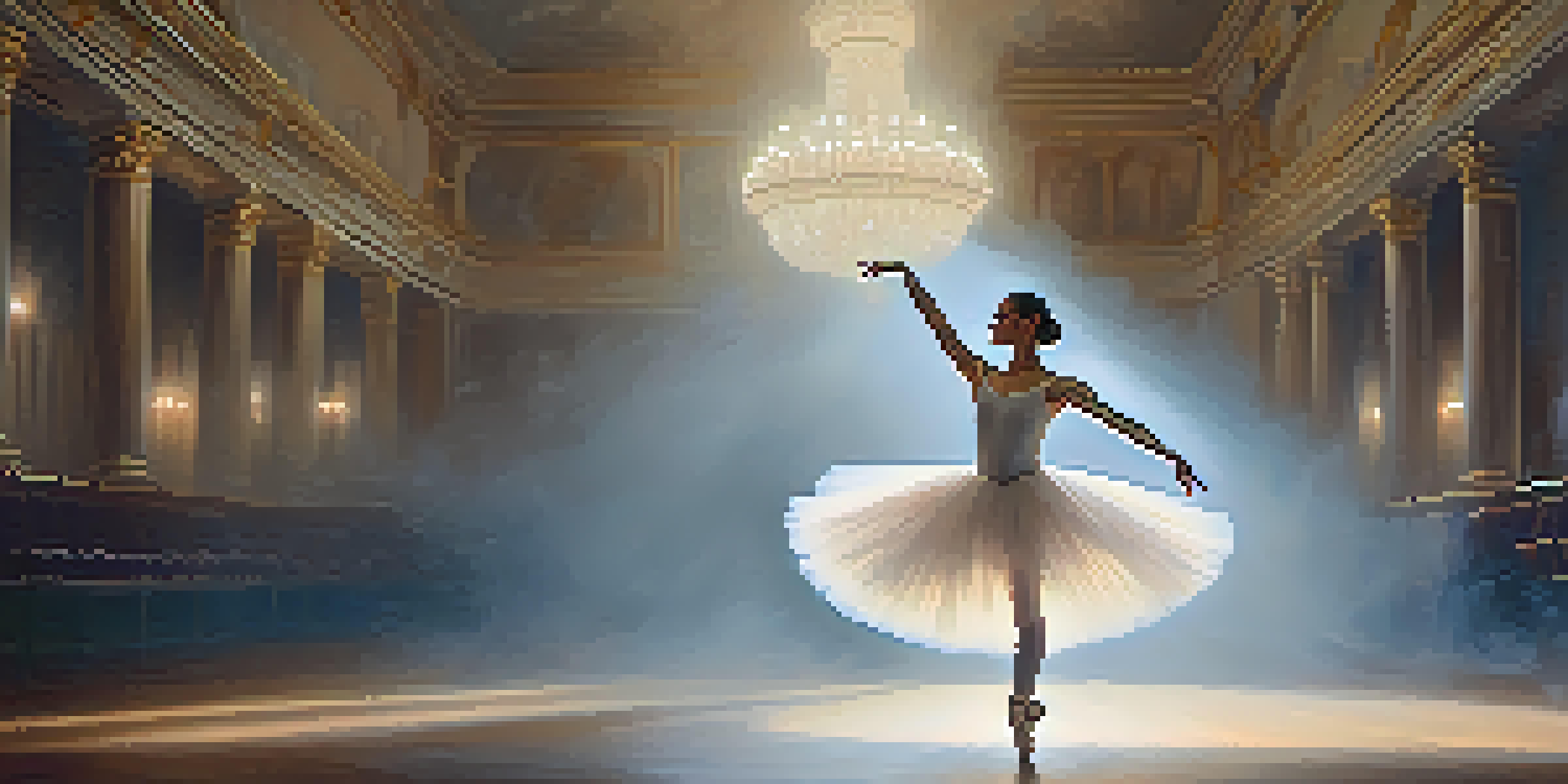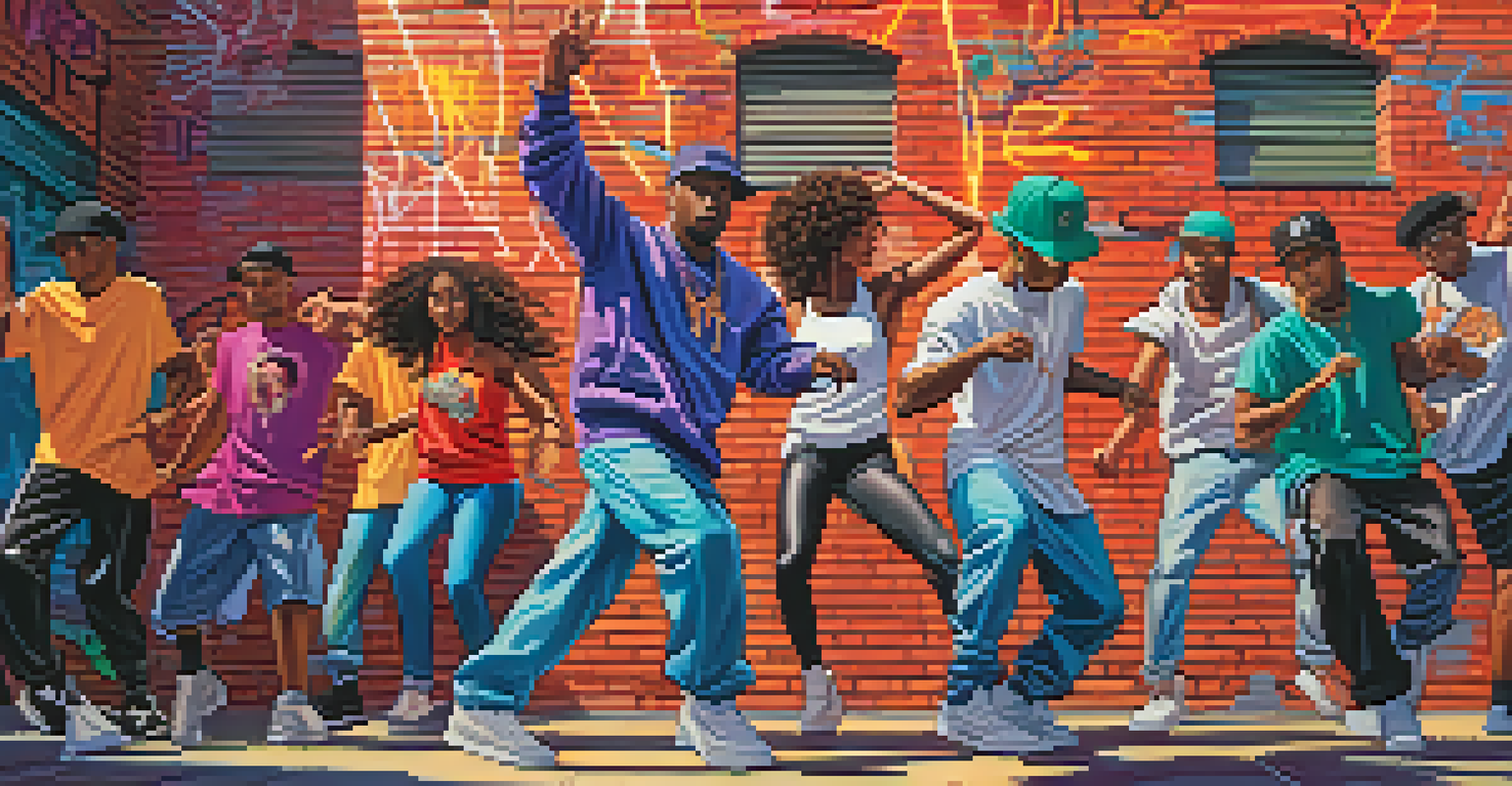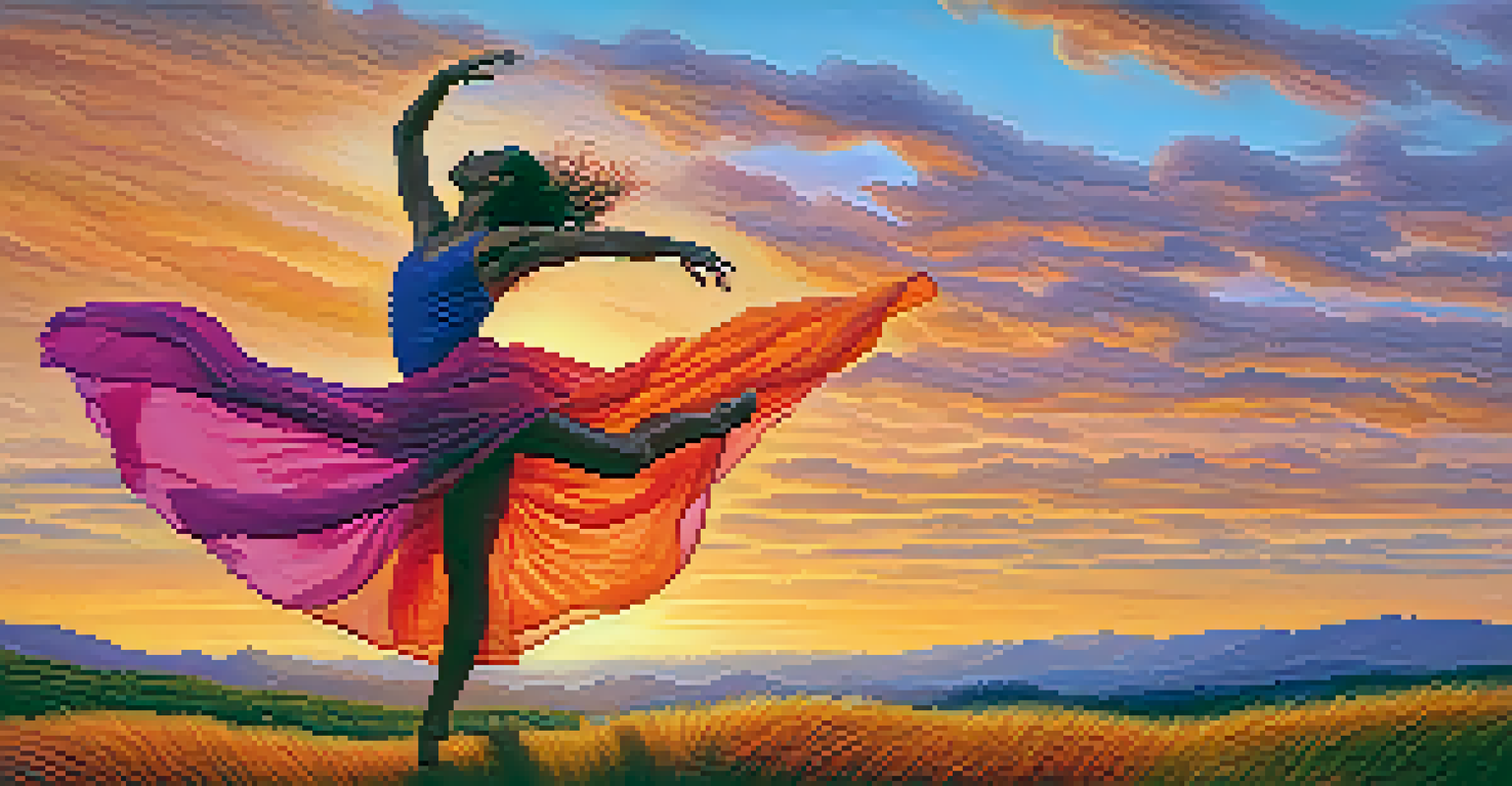Collaboration Between Dance and Music: A Harmonious Union

Understanding the Connection Between Dance and Music
Dance and music have long been intertwined, creating a dynamic relationship that enhances both art forms. From the rhythmic beats that guide a dancer's movements to the expressiveness of music that inspires choreography, the two disciplines complement each other beautifully. This connection is not just about timing; it's about conveying emotions and telling stories through movement and sound.
Dance is the hidden language of the soul.
Consider a ballet performance where the dancers' elegant movements are synchronized with the orchestra's melodies. The music sets the mood, while the dance expresses the narrative, engaging the audience on multiple levels. This collaborative synergy allows performers to create a cohesive experience that resonates deeply with viewers.
Ultimately, understanding this connection enriches our appreciation of both dance and music. When we realize how they work together, we can enjoy performances with a deeper sense of awareness, recognizing the artistry involved in their collaboration.
The Role of Rhythm in Dance and Music Collaboration
Rhythm serves as the heartbeat of both dance and music, establishing a foundation for their collaboration. In music, rhythm dictates the tempo and pace, while in dance, it influences movement patterns and styles. A dancer responding to a strong beat feels compelled to express that energy, creating a visual representation of the music's pulse.

For example, in styles like hip-hop, the syncopation in the music encourages quick, sharp movements, while a waltz's smooth, flowing rhythm invites graceful and fluid choreography. This interplay between rhythm and movement showcases the importance of timing and synchronization in performances, enhancing the overall experience.
Dance and Music: A Deep Connection
The intertwined relationship between dance and music enhances both art forms, allowing for emotional storytelling through movement and sound.
As performers explore different genres, they discover how varying rhythms can evoke different emotions and inspire unique movements. This exploration not only broadens their artistic repertoire but also deepens the connection between dance and music.
Choreography: The Dance of Creativity and Music
Choreography acts as the bridge between dance and music, translating musical ideas into physical expressions. A choreographer listens to a piece of music and visualizes how the movements can embody its themes, emotions, and nuances. This creative process involves not just interpreting the music but also experimenting with how different movements can enhance its message.
Music can change the world because it can change people.
Take, for instance, a contemporary dance piece set to a haunting melody. The choreographer might choose slow, fluid movements to reflect the music's melancholy, creating a powerful emotional experience for the audience. This thoughtful integration of choreography with music allows performers to bring the composition to life in a unique and compelling way.
Through collaboration, choreographers and musicians can push the boundaries of their art forms, exploring new styles and innovative techniques. This ongoing dialogue fosters creativity and encourages artists to take risks, resulting in performances that captivate and inspire.
Historical Examples of Dance and Music Collaboration
Throughout history, dance and music have been inseparable partners in many cultures. From ancient rituals to modern theatrical performances, their collaboration has evolved, reflecting societal changes and artistic movements. For instance, the fusion of jazz music with swing dance in the early 20th century created an explosive cultural phenomenon that celebrated creativity and joy.
Moreover, consider traditional forms like Kathak in India, where intricate footwork is synchronized with rhythmic music played on traditional instruments. This historical context highlights how dance and music have evolved together, each influencing the other's development.
Rhythm Drives Performance Dynamics
Rhythm serves as the heartbeat of both disciplines, influencing movement patterns in dance while dictating tempo in music.
These examples serve as a reminder of the rich tapestry woven by dance and music over centuries. They illustrate how collaboration can transcend time and cultural boundaries, creating a universal language that resonates with people worldwide.
The Impact of Technology on Dance and Music Collaboration
In today's digital age, technology has transformed the way dance and music collaborate, opening up new avenues for creativity. With tools like music production software and video editing programs, artists can experiment with sounds and movements in ways previously unimaginable. This technological evolution allows for seamless integration of diverse styles and influences, enriching performances.
For instance, the rise of social media platforms has enabled dancers and musicians to share their work globally, fostering collaboration across geographical boundaries. Online challenges and collaborations have sparked innovative projects that blend various genres, styles, and cultural influences, resulting in captivating performances that resonate with diverse audiences.
As technology continues to evolve, the possibilities for dance and music collaboration are limitless. Artists can now explore new mediums, from virtual reality to interactive performances, pushing the boundaries of traditional art forms and creating immersive experiences that captivate audiences.
The Emotional Power of Dance and Music Together
One of the most compelling aspects of the collaboration between dance and music is its ability to evoke emotions. Together, they create a profound impact on the audience, allowing them to experience feelings that words alone cannot convey. A powerful piece of music paired with an evocative dance can transport viewers into a different emotional landscape, making them feel joy, sadness, or nostalgia.
For example, think of a dramatic contemporary dance performance set to a moving score. The dancers' expressive movements, combined with the music's crescendos and decrescendos, can stir deep emotions and resonate with personal experiences. This emotional connection is what makes performances memorable and impactful.
Technology Transforms Artistic Collaboration
Advancements in technology are reshaping the collaboration between dance and music, enabling innovative performances that blend diverse styles.
Ultimately, the collaboration between dance and music enhances our understanding of human emotions. It serves as a reminder of our shared experiences and the power of art to connect us on a deeper level, transcending language and cultural barriers.
The Future of Dance and Music Collaboration
As we look to the future, the collaboration between dance and music promises to evolve in exciting ways. With the rise of new genres, innovative choreography, and the influence of technology, artists are poised to explore uncharted territories. This evolution will likely lead to hybrid performances that blend different styles and techniques, offering audiences fresh and captivating experiences.
Moreover, the increasing emphasis on inclusivity and diversity in the arts will inspire collaborations that reflect a broader range of perspectives and narratives. As artists from various backgrounds come together, they can share their unique stories, enriching the artistic landscape and fostering a sense of community.

In essence, the future of dance and music collaboration is bright and full of potential. As artists continue to push boundaries and explore new horizons, we can look forward to performances that challenge our perceptions and inspire us in ways we never imagined.